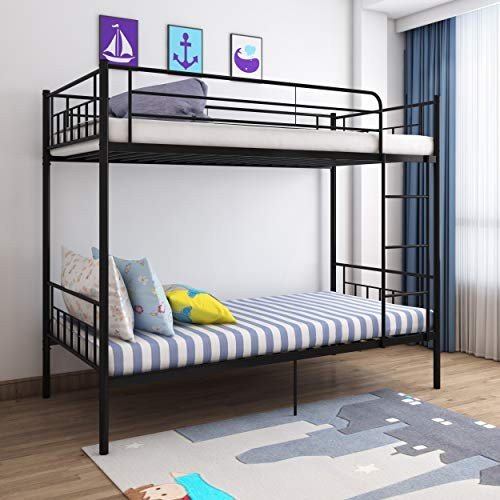The Ultimate Guide to Bunk Beds for Kids: Safety, Styles, and Solutions
Bunk beds have actually long been a popular choice among moms and dads seeking to optimize space in their kids's bedrooms. With advantages that go beyond their compact style, uk bunk beds beds use an enjoyable and practical sleeping arrangement while encouraging brother or sister bonding and cultivating imagination. In this thorough guide, we explore numerous elements of bunk beds for kids, including safety factors to consider, various styles available, and recommendations for choosing the right one for your household.
Why Choose Bunk Beds?
Bunk beds are created to stack one bed on top of another, using vertical space to develop more space for play and storage. They are especially useful for families with numerous children or minimal bed room space. In addition, they supply a daring sleeping environment that children often delight in.
Key Advantages of Bunk Beds:
- Space-saving design: Ideal for small rooms or shared areas.
- Affordable: Often more budget-friendly than buying 2 different beds.
- Encourages social interaction: Promotes bonding among brother or sisters or pals.
- Flexible options: Available in numerous designs and setups to fit any room style.
Safety First: Essential Considerations
When choosing a bunk bed for kids, security must be the top concern. The following functions are vital for making sure a protected sleeping environment:
Important Safety Features:
- Sturdy Construction: Ensure that the bed frame is made from long lasting materials such as solid wood or metal.
- Guardrails: Bunk beds should have guardrails on both sides of the upper bunk to avoid falls.
- Ladder Safety: A sturdy, integrated ladder or stairs with anti-slip rungs is essential for safe access to the leading bunk.
- Weight Limit: Check the producer's weight limitation capability for both the leading and bottom bunk.
- Bed mattress Size: Use the appropriate bed mattress size as defined by the bed producer to make sure a snug fit within the bed frame.
Security Tips for Parents:
- Monitor Sleep Habits: Teach kids the importance of not playing on or jumping off the bunk beds.
- Age Appropriateness: Generally, the upper bunk appropriates for kids aged 6 and older.
- Routine Inspections: Periodically look for any loose bolts, screws, or structural damage.
Designs of Bunk Beds
Bunk beds can be found in a range of designs, allowing parents to pick one that complements their child's room decor while conference particular requirements. Below are some popular designs:
Popular Bunk Bed Styles:
- Traditional Bunk Beds: Simple and traditional designs made of wood or metal without any extra functions.
- Loft Beds: Features a raised top bunk with space underneath for a desk, play location, or extra storage.
- L-Shaped Bunk Beds: Arranged in an L-shape, frequently perfect for corner spaces and can have additional storage alternatives.
- Twin over Full Bunk Beds: A twin bed on the top and a bigger full-sized bed on the bottom, accommodating children or teens of various ages.
- Triple Bunk Beds: Designed to fit three beds in a single footprint, suitable for larger families or sleepovers.
A Comparison of Bunk Bed Styles
| Bunk Bed Style | Description | Best For |
|---|---|---|
| Conventional | Classic style with 2 stacked beds | Requirement bed room setups |
| Loft Bed | Raised bed with usable space below | Research or play areas |
| L-Shaped | Bunk beds set up in an L-shape | Corner spaces |
| Twin over Full | Twin bed on top, full bed below | Various age siblings |
| Triple Bunk | 3 stacked beds | Large households or sleepovers |
Choosing the Right Bunk Bed
When searching for the best rated bunk beds bunk bed, consider the list below factors to ensure you make a notified choice:

Key Factors to Consider:
- Room Size: Measure the room dimensions to determine the suitable size and height of the bunk bed.
- Child's Age: Consider the age of your child(ren) when choosing a design and safety functions.
- Performance: Think about how much storage or play space you need and whether the bunk bed should serve additional purposes.
- Budget: Set a budget that includes not just the bunk bed but likewise the needed mattress and devices like bedding or safety gates.
FAQs About Bunk Beds for Kids
1. What age is appropriate for a child to sleep in the top bunk?
Usually, kids aged 6 and older must be able to safely oversleep the top bunk, though you need to always consider your child's maturity level.
2. Are bunk beds safe for toddlers?
It is not recommended for toddlers or extremely young kids to sleep in the leading bunk due to the risk of falling.
3. How do I preserve the bunk bed?
Inspect the bed routinely for any signs of wear and tear, tightening screws, and cleaning up the bed mattress to make sure prolonged security and toughness.
4. Can I transform a bunk bed into 2 different beds?
Many bunk beds are developed to be convertible, allowing you to separate the beds when needed. Examine the maker's specs before buying.
5. How can I maximize space in a bunk bed room?
Use under-bed drawers, racks, or lofted styles to develop extra storage services in a space with a bunk beds sale bed.
Bunk beds use a wonderful mix of enjoyable, functionality, and space-saving utility, making them an ideal choice for young families. By thinking about security functions, numerous designs, and useful aspects such as room size and age appropriateness, moms and dads can select the ideal bunk bed for their child's needs. With the right choice, bunk beds can change a bed room into a wonderful space that motivates play, creativity, and bonding among brother or sisters. Constantly keep in mind to prioritize security and maintenance to maximize this special sleeping plan.








